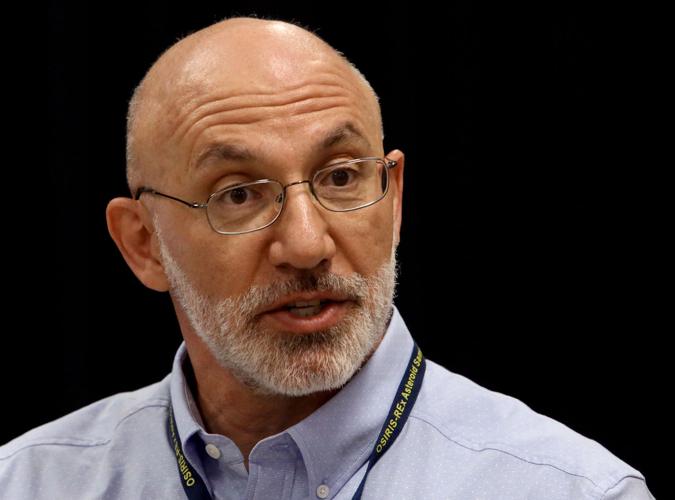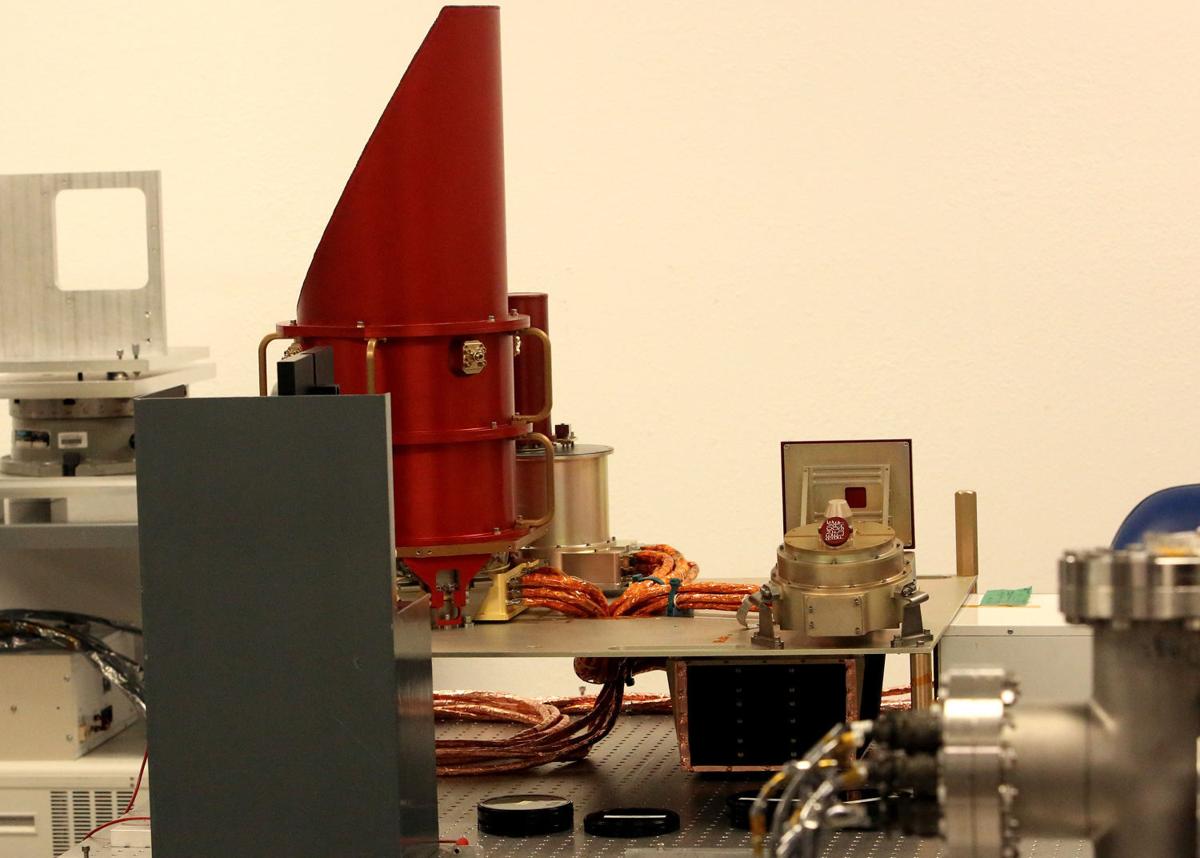Scientists and engineers at the University of Arizona have built a suite of cameras to guide NASA’s OSIRIS-REx spacecraft to the asteroid Bennu, map its surface, identify a spot to grab a sample and record and verify the sample’s collection.
The first U.S. mission to sample and return a pristine piece of asteroid material is scheduled to lift off from Kennedy Space Center in Cape Canaveral, Florida, on Sept. 3, 2016.
The OSIRIS-REx camera suite, called OCAMS, consists of three cameras with unique but overlapping abilities. It was built by the UA’s Lunar and Planetary Lab, under a $40 million NASA contract.
Bashar Rizk, instrument scientist for OCAMS, said the cameras were designed and built to meet the science requirements of the mission.
The largest camera, named PolyCam, is basically a telescope with an 8-inch aperture that also functions as a microscope.
It will aid the spacecraft’s navigation to the asteroid with its ability to detect the faint glow of tiny Bennu (1,900 feet in diameter) from 1 million miles away, Rizk said. Along the way, it will scout for potential hazards.
Used in microscope mode, it can examine sampling sites for the tiny grains called regolith that will be collected with the spacecraft’s touch-and-go sampling arm, TAGSAM.
Collection of the regolith will be verified by another camera in the suite — the sampling camera or SamCam. It will film the sample collection and then verify that material has been collected. The mission goal is to collect at least 2.1 ounces of material.
Because TAGSAM could raise some dust on its three attempts to sample, SamCam has been fitted with three polychromatic (clear) filters that will rotate into place after each try.
The third camera in the suite, MapCam, will map the surface of Bennu as the spacecraft orbits it for about a year, focusing a variety of scientific instruments on its surface.
MapCam will identify possible sampling sites that will be further scrutinized by PolyCam, operating in its microscopic mode. In tests, it was able to resolve particles 0.7 centimeters in diameter, Rizk said.
That’s no small feat, said Christian d’Aubigny, deputy instrument scientist. OSIRIS-REx selected a carbonaceous asteroid for a visit, because it provided the best chance of finding the organic molecules that are the precursors of biological life. That means it is dark.
“It is 2 to 3 percent reflective. Typical black paint is 7 percent,” said d’Aubigny.
The camera had to be capable of resolving tiny, dark particles on the surface of the asteroid in the dim light of deep space, with quick exposures from a moving spacecraft.
It can do it, said d’Aubigny. It has been tested and retested in a variety of conditions that mimic its journey through the super-cold vacuum of space to the heated surface of the asteroid itself.
The overlapping abilities of the three cameras provide “functional redundancy” in case something goes wrong with one of them, said Chuck Fellows, the OCAMS program manager. “We can lose one camera and still accomplish the goals of the mission,” he said.
The camera’s electronic operating system is “completely redundant,” he said Each of its two halves operate independently.
The camera system was built with “significant contributions” from the College of Optical Sciences and Steward Observatory at the UA, Rizk said.
OCAMS will now be shipped to Lockheed Martin Space Systems in Littleton, Colorado, for installation into the spacecraft.
The NASA mission is directed by the scientists of the Lunar and Planetary Lab, under principal investigator Dante Lauretta.
Ed Beshore, the deputy principal investigator, said the mission currently employs about 70 personnel in Tucson, down from a high of 90 when OCAMS was under development.
It will ramp back up when the operations center at the off-campus Michael J. Drake building goes into action.
The mission, budgeted at $805 million without the rocket, is on schedule and on budget, said Heather Enos, the project planning and control officer.
About $200 million of that total will be spent in Arizona, including a contract for a thermal emission spectrometer being built at Arizona State University by a team at the ASU School of Earth and Space Exploration, headed by Philip Christensen.
When OCAMS leaves the building, workers will be raising some dust to build an auditorium and work area for the scientists who will gather there as the spacecraft approaches Bennu in 2018. It will orbit, map and scrutinize the asteroid for up to 15 months before it samples its surface in 2019.
The sample capsule is scheduled to return to Earth in September 2023.









